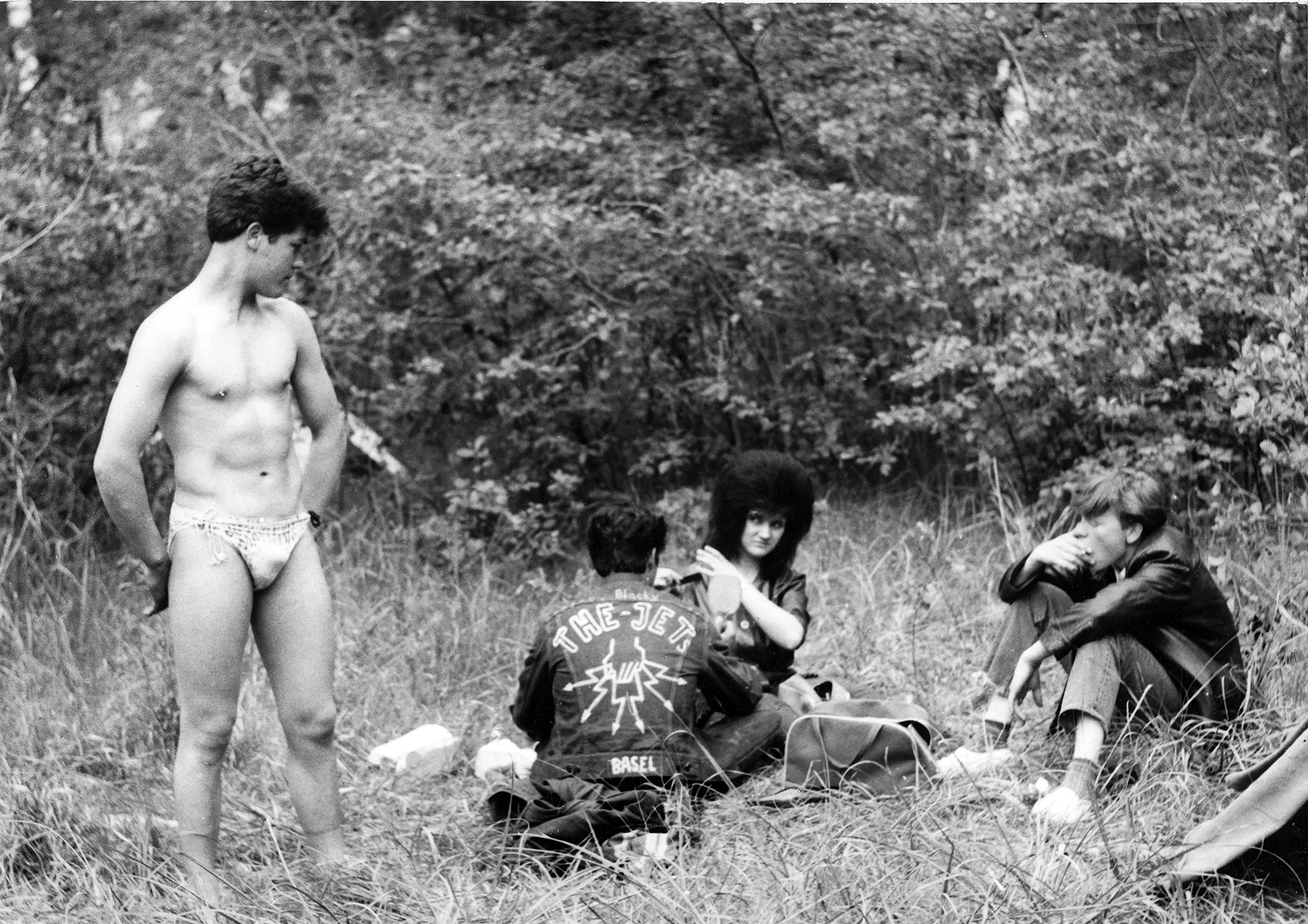
Exhibition
May 2 - August 31, 2024
Opening Reception:
May 2, 2024
6 - 8 PM PST
Main Gallery
Free to Members and the Public, Donations Encouraged
In the heart of early 1960’s Zurich, Karlheinz Weinberger captured the essence of rebellion through his lens, focusing on the 'Halbstarken'—teenagers defying norms with their distinctive, embellished attire and an unabashed admiration for icons like Elvis Presley. Beyond a mere observer, Weinberger, a quietly revolutionary figure himself, delved into subcultures from rugged bikers to intimate nude male portraits, exploring themes of identity, freedom, and the bold defiance of societal constraints. His work, a testament to the vibrancy of youth and the outsider spirit, offers a unique window into the unspoken narratives of those daring to live authentically on the fringes.
In the vibrant underbelly of post-war Zurich, Karlheinz Weinberger emerged as a chronicler of the unconventional, capturing the essence of those who lived on society's fringes. His lens focused on the 'Halbstarken', a group of rebellious youths who defied the era's sartorial norms with customized denim, oversized belts, and an unabashed admiration for American icons like James Dean and Elvis Presley. These teenagers sought not political revolution, but personal freedom, expressing their identities through fashion and attitude in the conservative landscape of 1950s Switzerland.
Weinberger's fascination with these young rebels was more than mere observation; it was a deep connection to their desire for individuality. As a quiet observer, he was invited into their world, documenting their gatherings and self-fashioned attire with a genuine curiosity and empathy that transcended the visual. His photography sessions became collaborative art, a space where the 'Halbstarken' could further amplify their defiance against societal norms.
Yet, Weinberger's oeuvre is vast and complex, stretching beyond the public rebellion of youth to explore more intimate and hidden realms of male identity. Before his entanglement with the 'Halbstarken', Weinberger was already an established figure within the Swiss gay community, contributing under the pseudonym 'Jim' to Der Kreis ('The Circle'), an early homophilic society that celebrated male beauty in the pages of its journal through photography, literature, and art. In these pages, Weinberger found a platform for his other significant body of work: the secret male nudes.
These nudes, shot with the same tender gaze he afforded the Halbstarken, reveal a more vulnerable aspect of male identity. Away from the public eye, in the privacy of his studio or the secluded natural landscapes, Weinberger's subjects shed their societal roles along with their clothing. These photographs depict not just the male form but intimate explorations of self-expression and identity, capturing moments of vulnerability, strength, and sensuality. They reflect defiance of their own, challenging the taboos surrounding male nudity and, in some cases, homosexuality in a time when both were criminalized or considered deviant.
Weinberger's dedication to portraying the 'outsider'—whether clad in rebellious attire or bared to the lens—was an act of rebellion in itself. His work with the 'Halbstarken' was a celebration of youth and freedom, while his nudes ventured into the more private rebellion against societal constraints on sexuality and identity. Both strands of his work demonstrate a profound empathy and respect for his subjects, viewing them not as mere subjects of curiosity but as partners in a shared quest for self-expression.
Despite facing police scrutiny and societal censure, Weinberger preserved the dignity and anonymity of his models, never capitulating to the pressures to conform or reveal. His photographs, many of which remained unseen until after his death, offer a poignant insight into the lives of men seeking connection, identity, and acceptance.
In the end, Karlheinz Weinberger's legacy is multifaceted. He was a chronicler of a youth movement that dared to stand out, an intimate observer of male beauty and vulnerability, and a quiet revolutionary in the realm of photography. His work is a testament to the power of the lens not only to observe but to validate and celebrate the lives of those on the margins. The 'Halbstarken' and his nudes, though seemingly disparate subjects are united in their portrayal of the human desire for freedom, acceptance, and the expression of one's true self.
Weinberger's photographs, beginning to be recognized by a wider audience, remind us of the enduring relevance of his vision. They speak to current generations about the importance of defiance, the beauty of diversity, and the inherent dignity of all individuals, regardless of societal judgment. Through his work, Karlheinz Weinberger immortalized the 'outsiders within', offering a window into worlds both vibrant and vulnerable, and in doing so, carved out his indelible place in the annals of photographic history.
Den Bell
President, Bob Mizer Foundation